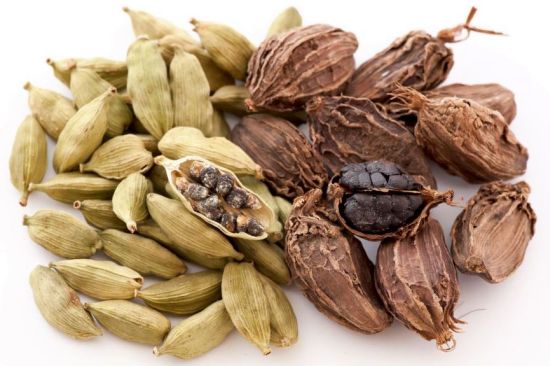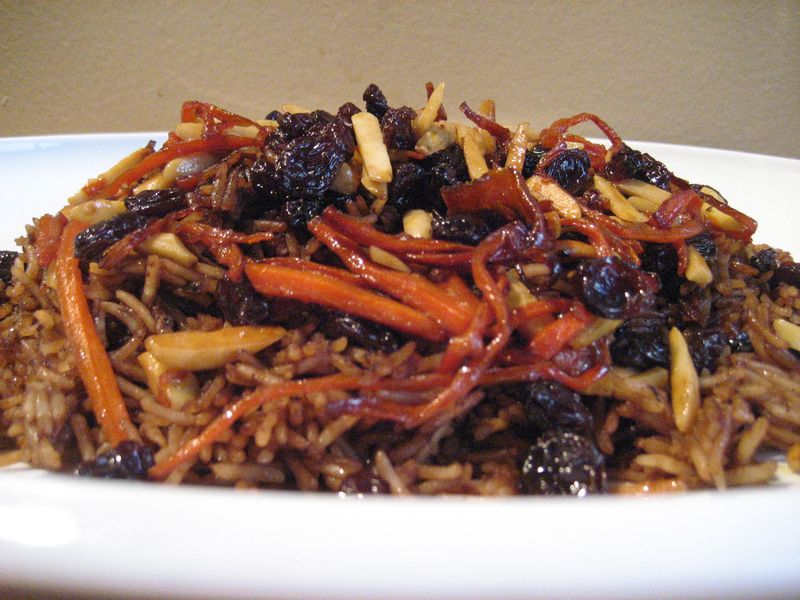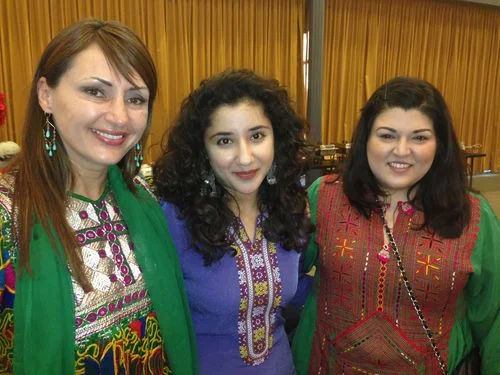By Katie
Here in San Francisco we spend the better part of July and August in a blanket of fog, sweaters and close-toed shoes firmly in place, waiting for “our” summer to arrive. This usually happens come September, just as the rest of the country is pulling out their woolens. When temperatures moved north of 90 degrees here last week, there was only one thing to do: eat ice cream.
Humaira and I told the kids we’d be getting together after school one day to make sundaes. They were over the moon. But their visions of hot fudge and whipped cream came to a screeching halt when they learned we’d be making Afghan sundaes (falooda), with nary a maraschino cherry in sight.
I could relate. When I first heard about falooda, I was similarly perplexed. I couldn’t wrap my mind around the dessert’s combination of crushed ice, noodles and ice cream. How could it be edible, much less tasty? But a few spoonfuls into my first falooda at Salang restaurant in Little Kabul and I was sold.
Falooda is a South Asian specialty served during the warm months in Pakistan, India and Iran, and among others. Each country lends its own twist on the dessert. In Afghanistan, this means shaved ice is topped with rosewater- or cardamom-flavored handmade ice cream , rose water-flavored simple syrup, vermicelli noodles, plenty of Afghan cream (called qaymaq), and a generous measure of chopped pistachios. Afghan ice cream is very rich, almost dense, and made in a unique way, which Humaira wrote about a while back. You can read about it here.
As for our afterschool sundae fest, the kids seemed genuinely surprised by how good the falooda was. That’s not to say they’d opt for an Afghan sundae over a banana split. But the bowls were licked clean and nobody asked for the chocolate syrup.
Afghan Sundae
Falooda
2 ounces thin rice vermicelli or glass noodles
¼ cup simple syrup*
1 ¼ tsp. rosewater
3 cups ice
1 quart premium vanilla ice cream
¼ cup unsalted, chopped, toasted pistachios
Cook the noodles according to package directions and cool to room temperature. You can do this by running cold water over the noodles.
In a small bowl, mix together the simple syrup and rosewater.
Put the ice into the bowl of a food processor fitted with a metal blade and process until the ice is finely chopped.
Set out four serving bowls. Put ½ cup chopped ice into each bowl. Set 1/3 cup cooked noodles over the ice in each bowl. Top the noodles with 2 scoops of vanilla ice cream. Drizzle 2 teaspoons of the simple syrup over each bowl of ice cream. Sprinkle 1 tablespoon of nuts over each sundae. Serve immediately.
*To make your own simple syrup combine 1 cup water and 1 cup granulated sugar in a small saucepan. Bring to a bowl, stirring regularly, and boil for 5 minutes. Set the syrup in the refrigerator to cool. Refrigerate the leftover syrup in a jar with a fitted lid. It will keep for a month and is useful as a sweetener for cold beverages such as iced tea and lemonade.
Serves 4
Except where otherwise noted, all content on this blog is licensed under the Creative Commons Attribution-NonCommercial-NoDerivs 3.0 Unported license.















